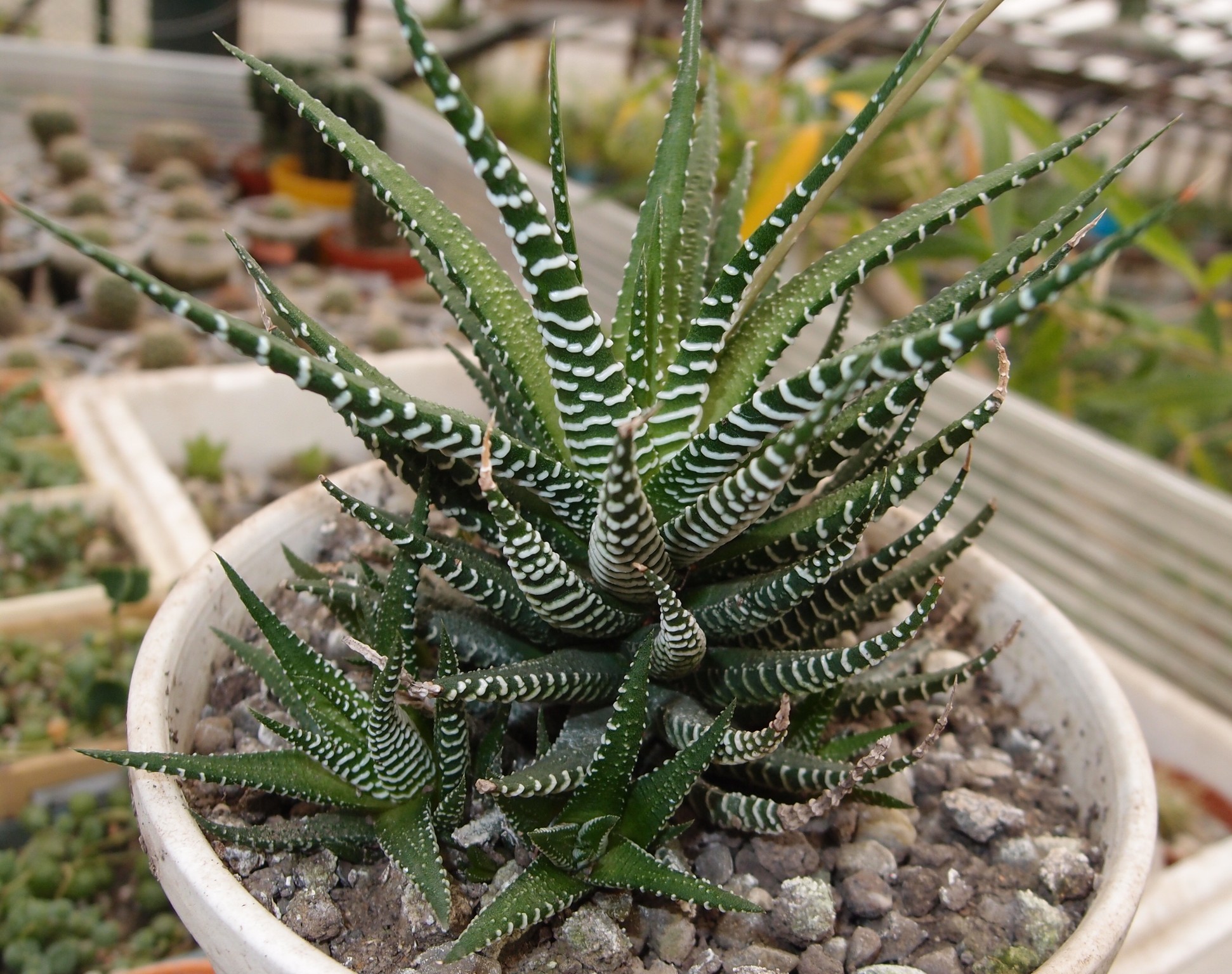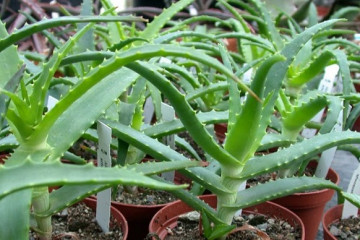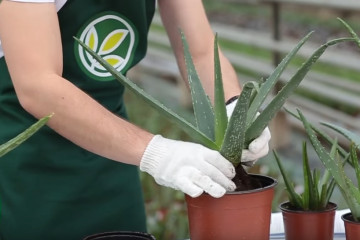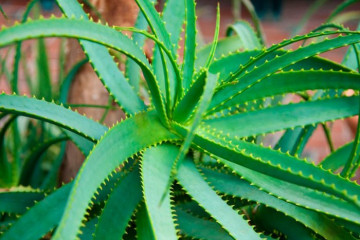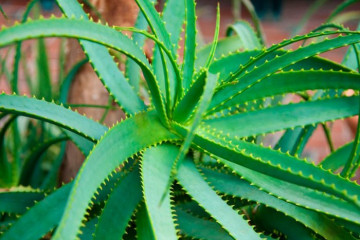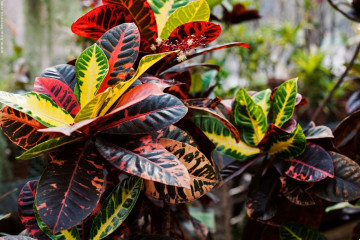Aloe spinous or aristata - what is this flower
Content:
Indoor plants delight the eye with their growth and flowering. Caring for green pets helps to distract from problems and brightens up the gray days. Each grower should pay attention to the spinous aloe: the plant is unpretentious, and it is interesting to grow it.
Aloe spinous - what is this flower
Aloe aristata is a solitary bush-shaped herb. Short stems form groups of rosettes. Lanceolate-shaped gray-green leaves are covered with swollen white dots. At the tops are white bones that break off with age. The number of leaves in one rosette can reach hundreds, and their length in the process of growth can increase to 10-15 cm.
A plant that is often confused with spinous aloe is hawortia herbacea. The main differences are:
- has no awns on the tops of leaves;
- more compact;
- the appearance of daughter plants does not interfere with the growth of the mother;
- longitudinal drawing on the top of the sheet.
The healing properties of aloe aristata
Aloe spinous contains amino acids, flavonoids, vitamins and minerals. Healing and antibacterial drugs are made on its basis. Aloe juice is used to treat inflammatory diseases, and beauticians use it as part of masks, shampoos and other care products. Aloe juice promotes skin regeneration and hydration.
Home care for aloe aristata
Aloe aristata should be grown on a well-lit windowsill as it requires a lot of light even in winter. In summer, the comfortable temperature for spinous aloe is 18-26 ℃ above zero. It can also be taken out into the garden at this time of year. In winter, the room should be cooler, but not lower than +10 ℃.
Watering rules and humidity
The frequency of watering depends on the rate of drying of the soil. It is necessary to moisten it with settled water about a couple of times a month. In winter, the frequency of watering should be halved. The required air humidity is 50%.
Top dressing and soil quality
Aloe grows well on cactus soil. It can be made at home - for this, weakly acidic or normal acidity soil is used. It should be breathable and loose. This effect is achieved by increasing the proportion of sand in the composition. Top dressing is carried out with a complex of fertilizers for cacti twice a month in the summer.
Flower container size
The main parameter when choosing a container for planting is its diameter, which should be slightly larger than the circumference of the outlet. This place will be occupied by the layers formed from the root. The capacity can be taken low, since the root system occupies only the upper soil layer. It is important to have a sufficient number of water drain holes at the bottom of the pot.
Pruning and replanting
Due to the nature of the root system, young plants require an annual transplant. Mature plants can be replanted after two years. In a pot, the root neck of the plant is placed in the center and is not lowered into the soil below the surface of the soil. There is no need for pruning. It will be enough to remove damaged and wilted parts of the plant during transplantation.
Flowering and dormant period of aloe aristat
Blossoming of spinous aloe begins towards the end of spring. A brush with large flowers appears on a long peduncle growing out of a rosette. They have a tubular structure and can range in color from bright orange to scarlet. In the fall, a dormant period begins, which lasts until the end of winter.
Propagation of spinous aloe by stem and leaf cuttings
A large leaf from the base of the plant is placed in the refrigerator for 24 hours. A growth stimulator is applied to the cut. Leaves are planted in a container with prepared soil to a depth of no more than 3 cm. Placed under a cellophane film.
An effective method - the propagation of spinous aloe by stem cuttings - is carried out in the spring. For this, three-year-old plants are suitable, from the bottom of which cuttings are taken. The seedlings are prepared: they are left in the shade for a day, after sprinkling with wood ash. Then they are placed in small containers with moist soil. Comfortable conditions for rooting cuttings are: good lighting, a temperature of about +20 ℃ and regular moisture. In this case, the flower will bloom.
Growing problems. Diseases and pests
Improper watering is the main cause of aloe discomfort. As a result, the plant has various diseases.
Root rot
Due to waterlogging, decomposition of the roots begins and the growth of aloe spinous stops. The assistance consists in transplanting into new soil with an increased sand content. In this case, the spoiled roots are cut off, and the rest are covered with activated carbon.
Dry rot
It is almost impossible to recognize outwardly, because the plant rots from the inside. In this case, only prevention will save aloe, which comes down to treatment with antifungal drugs.
Various insects can also give aloe spinous a lot of trouble.
Effective preventive measures:
- disinfection of store soil;
- careful inspection of the leaves;
- creation and control over the growth conditions of aloe.
Shields
They suck the sap of the plant through punctures in the leaves. Their presence can be seen by the stickiness of the greenery. Regular treatment with a solution of methyl alcohol and water in a 1: 1 ratio will help get rid of these pests.
Mealybug
Its presence is evidenced by white lumps, similar to cotton wool. A solution made from tar or laundry soap will help get rid of the parasite. The plant is sprayed, and after 5 hours, washed off with plain water.
Garlic tincture can be a substitute for soapy water. A teaspoon of chopped garlic is left in a glass of water for a day. Rubbing the leaves helps fight other pests as well.
Spider mite
White thin threads are a signal of its appearance. You need to fight the tick with the help of special preparations - acaricides.
Thrips
They leave traces of a silvery color on the leaves. Insecticides are the best help in killing these pests. Processing is carried out in two stages: at the first stage, the insects themselves die, and after repeated processing, the larvae disappear after a week.
Aphid
You can drive out uninvited guests with the help of potato tops, which are dried and insisted on boiling water for 4 hours. Aloe aristata is treated with this liquid overnight.
The problems with growing spinous aloe are not just over-watering. The main indicator of improper care is leaves. If you notice their changes in time, you can correct the conditions of detention without much harm to the plant. Symptoms:
- the leaves have stretched out and become thinner - not enough light and moisture;
- yellow edges, brown spots appeared - additional food is needed;
- the tips are dry - it is necessary to transplant, the roots do not have enough space;
- blushed - the sun is too bright, you need to shade;
- the plant is bare - watering is carried out with cold water.
Aloe spinous is not distinguished by bright flowering. The flower attracts its fans by its unpretentiousness, ease of care, as well as many useful properties that fill each leaf in its spectacular rosettes.

